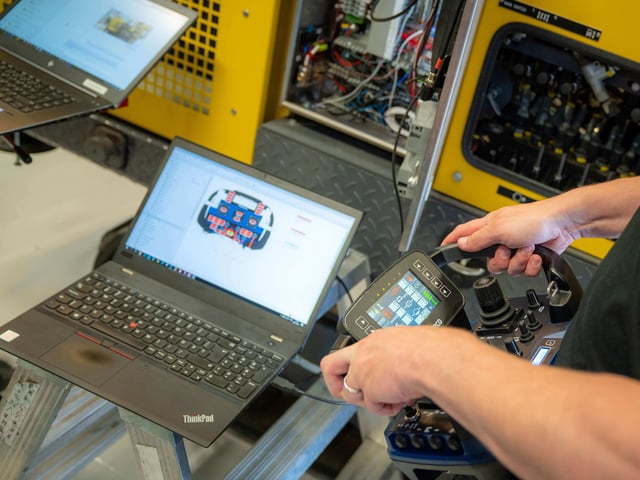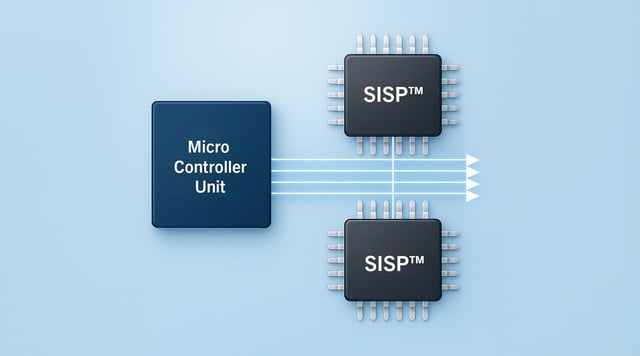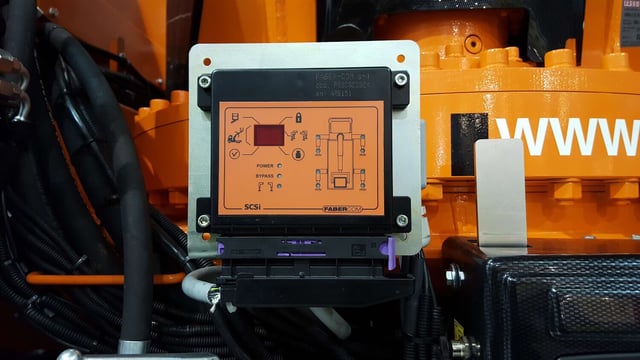As screens become larger, clearer, and more important for operators, we need to carefully manage how information is presented and ensure we use screen space as efficiently as possible.
Lessons from control rooms
If we look at control rooms in industries like refineries, nuclear plants, or dairy plants, we see a revolution in how information is handled. Screens used to be cluttered with animations, colorful graphics, and data tables.
Studies show that major accidents have happened simply because operators couldn't see the warning signs in time, or because excessive alarms overwhelmed their ability to react.
Automation brings new challenges
Lessons from control rooms become even more relevant as automation increases. Operators now monitor and support machines, stepping in when something unusual happens or a new sequence needs to be started.
Additionally, a single operator may manage multiple machines at once. This means that screen information must quickly transition between an overview mode and detailed insights into a specific machine.
Practical design considerations
Some applications require operators to focus on the real world more than on a screen. For example, a crane operator has little time to check a display, so a simple graphic showing the load weight or a camera feed can provide better guidance. Be cautious with blinking messages and LED lights, as they can be distracting when full attention is needed on the physical task.
In complex systems like geo-technical machinery, sensors can assist operators by highlighting insights that would otherwise be hard to detect.
Let´s look at some basic design
Improve readability:
- Use a neutral gray background with no decorative patterns.
- Remember that one in twelve men (and one in two hundred women) are colorblind, so alarms must be designed accordingly.
 Given the shortage of skilled operators, we need to consider how information is structured on the screen to help the inexperienced.
Given the shortage of skilled operators, we need to consider how information is structured on the screen to help the inexperienced.
Answering the operator’s key question: "is everything OK?"
For experienced operators, raw data may be enough to answer this question. But using analog-style gauges, like speedometers in cars, can help communicate data at a glance.

For inexperienced operators, clear indicators help them understand what is good or bad:
- Pressure should be between 190-250 B
- Efficient RPM is 1500-2000
- Machine temperature should be 80-90°C
 With this graph it takes a second to find out what is going on.
With this graph it takes a second to find out what is going on.
Without visual guidance, an operator has to manually scan the numbers, compare them, and process the information—often in dusty, noisy, and stressful conditions. A well-designed graph can provide this information instantly.
Designing better alarms
Effective alarms are not just about catching attention—they’re about being understood by all users, in all conditions. That includes considering users with colorblindness (as noted earlier) and designing for context.
Prioritization also matters. An alarm shouldn’t only signal that something is unusual—it should help clarify why it matters. Take a simple example: in very cold conditions, an operator might increase machine speed to warm up the system. Instead of sounding alarms and flashing lights, a follow-up message could show how this affects fuel consumption—supporting a smarter decision, rather than interrupting the task.
Trends: predicting the future
Trends are one of the most valuable pieces of information. The industry standard is to use purple lines to indicate trends, helping operators quickly see whether pressure is rising or falling. With additional computation, the trend can even be displayed as an arrow to further aid understanding.
Less is more
It takes confidence to reduce the amount of information displayed, but doing so improves usability. The key is field studies—testing interfaces with real operators in real conditions. Leaving the desk and observing how operators work can give you insights that competitors lack.
Investing in efficient HMI (Human Machine Interface) design makes machines safer, more efficient, and more attractive to operators. If you want to learn more, check out our book
Smart Operator—a guide to make your machine more attractive and easier to use.








